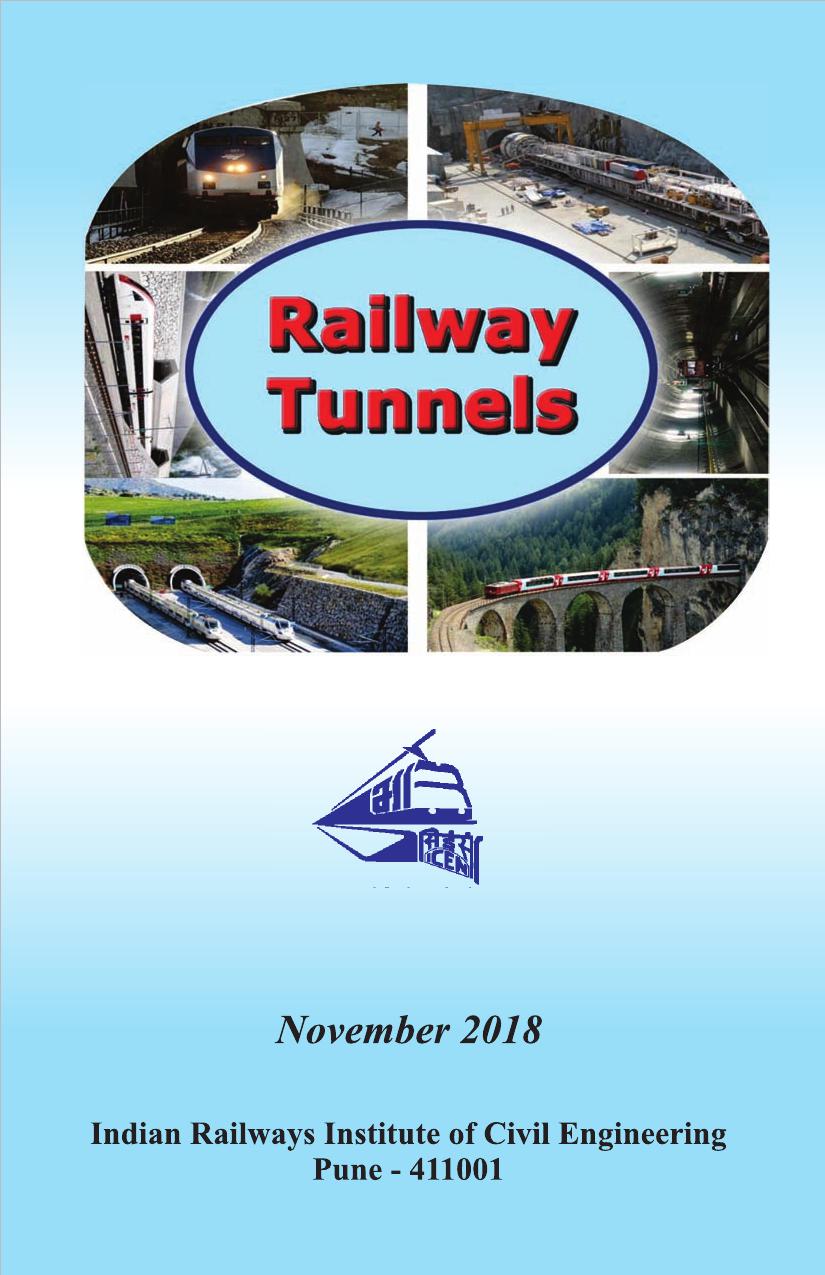FOREWORD
Indian Railway Institute of Civil Engineering (IRICEN) regularly publishes text books and monographs on various subjects dealt by and relevant to the Civil Engineers of Indian Railways.
In last few years, lot of tunneling works are being executed by Indian Railways and many of them in Himalayan geology, one of the toughest geology in the world to construct or maintain any underground structures. Considering this, IRICEN has started special course on “Tunneling” from year 2018 onwards for the Indian Railway officials dealing with tunnels. During these courses, most of the trainee officers had lot of doubts and queries, with a desire to have answers to all these doubts and queries in one common document or publication. To address this, Shri R. K. Shekhawat, Senior Professor/IRICEN, has authored this book. The contents of the books are based on various Text Books/Research Papers/ Publications and lectures notes of eminent teachers on the subject, as listed in the Bibliography and References at the end of book. This book covers all technical aspects about Planning of tunnels, Construction of tunnels and Inspection & Maintenance of tunnels. It is expected that this publication will be useful for all the engineers dealing with tunnels in general, and engineers of Indian Railway in particular.
Suggestions for improvement, including need for addition/ deletion of any specific topics, may be forwarded to IRICEN.
These suggestions will be considered in future revision of this book.
PREFACE
Before early 1990s, when construction of Konkan Railway commenced, most of the tunnels constructed in Indian Railways network were in the areas where the rocks were strong “igneous” type, not having much of geological discontinuities or other problems (like joints, folds, faults, shear zones, water charged zones, high tectonic stresses etc.). This is reflected in the fact that these tunnels are generally unlined and even after so many years there is not much of structural problems in these tunnels, except some instances of water seepage (due to no drainage system being provided in these tunnels) or problem of stone pieces falling at isolated places.
In Konkan Railway network, out of total 92 tunnels of total length 84.8 km, only 6 – 7 tunnels (Pernem Tunnel, Old Goa Tunnel, Verna Tunnel, Honnaver Tunnels and part of Byndoor Tunnel) were located in soft or weak grounds. All other tunnels were located in Basalt, a competent igneous rock. But these few tunnels in soft ground (of total length less than 5 km and maximum length of any tunnel being 1.5 km only) presented peculiar problems and contributed to delay in completion of project in targeted time. With the Indian Railway network getting expanded to all parts of the country, tunnels are being/have to be excavated in Jammu & Kashmir, Himachal Pradesh, Uttarakhand and the Northeastern States, mostly in the Himalayas. The Himalayan Geology, being one of the youngest geology of the world, contains many geological discontinuities and surprises in the form of joints, faults, folds, shear zones, water charged areas, high tectonic stresses, vulnerable slopes etc. This presents a great challenge to tunnel engineers in excavation and maintenance of tunnels in these areas. In fact, some of the railway projects in these areas have been delayed due to problem related with tunnels.
Therefore, understanding of the all the issues relevant to construction and maintenance of tunnels has become further important for engineers of Indian Railways.
There are many books and research papers on the subject of tunnels, but they are mostly written by foreign authors, and they may not be sufficient to tackle the difficulties in Himalayan region. Dr. Bhawani Singh, and some other authors with him, have written about tunneling in weak rocks (relevant to Himalayan region). Thus, for understanding the subject of tunneling in entirety, one has to refer to a number of Text Books, Research Papers and other Publications. This may not be possible and practicable for every field engineer. While organizing training courses on Tunnels at RDSO and teaching the subject of Tunnels at IRICEN, it was observed that the trainee officers always expressed need for a common document/ publication, containing technical material covering all activities related to railway tunnels. This book is an effort in that direction.
It contains all the relevant aspect of tunneling i.e. Planning, Construction, Inspection and Maintenance of Railway Tunnels.
The contents of the books are based on various Text Books/ Research Papers/Publications (listed in the Bibliography) and learning/lectures notes on the subject, which the author had good fortune of learning from stalwarts on the subject especially Dr. Bhawani Singh (Retired Professor, IIT/ Roorkee) and Dr. K. G. Sharma (Emeritus Professor, IIT/ Delhi). The author expresses his indebtedness to them.
The technical material collated for publishing Indian Railway Tunnel Manual, during posting of the author as Director/ GE/RDSO, has also been referred at some place, which is acknowledged.
The support and help rendered by Shri. Ghansham Bansal (Chief Vigilance Officer/Delhi Metro), Shri B. Ravi Kumar (Senior Instructor) and Shri Sabyasachi Roy (Senior Instructor), in proof reading of the book and offering valuable suggestions, is also appreciated.
It is felt that this book will be useful to engineers of Indian Railways. However, there is always scope for improvement in any publication. Therefore, suggestions for improvement are welcome from all the readers and the same may please be forwarded for incorporation in the future editions.
